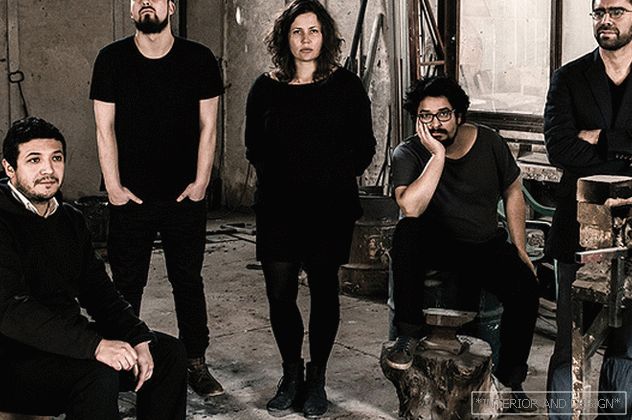Verner Panton (1926-1998) - a symbol of the 1960s, a master of acidic colors, fluid forms and futuristic design. It was he who introduced the aesthetics of pop culture in the furniture and interior.
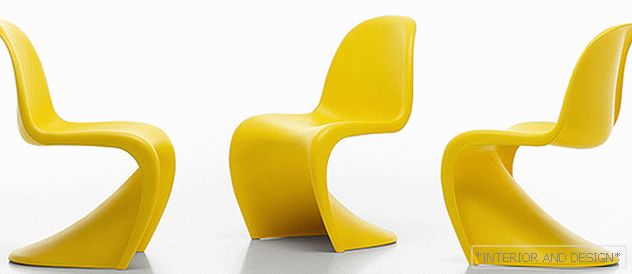 New solar version - chair Verner Sunlight, Vitra.
New solar version - chair Verner Sunlight, Vitra. Born in Denmark, he made a name for himself there, in the 1960s he moved to Switzerland. In the mid-1950s, in the era of the Beat artists, young artists and writers bought old trucks and traveled around the continent. One of the most extravagant trucks broken by Volkswagen belonged to the young Danish architect Werner Panton, who managed to turn the vehicle into a mobile studio. Every few months, Panton broke from Copenhagen and left to go all over Europe, going around factories and potential buyers. Denmark as a country involved in Scandinavian design, in which modernist aesthetics combined with nature, was on the crest of popularity. At first, Werner Panton’s style fit into the Scandinavian system: streamlined shapes, minimalism, light wood. But Panton realized that to gain recognition can only be done by doing something in defiance of tradition, something extraordinary and extraordinary. Paton had strong connections with famous Danish designers. Paul Henningsen taught him at the Copenhagen Royal Academy of Art. After graduation, he worked for the grandeur of Danish architecture, Arne Jacobsen. He was friends and worked with Hans Wegner. Unlike Hans Wegner, who became famous for his skillfully made wooden teak chairs, which became classics of Danish design, Panton was interested in plastic and other rapidly developing artificial materials. It is thanks to these materials, bright tones, spectacular geometry, which leads to pop art, Panton took a place in the pantheon of designers of the twentieth century.
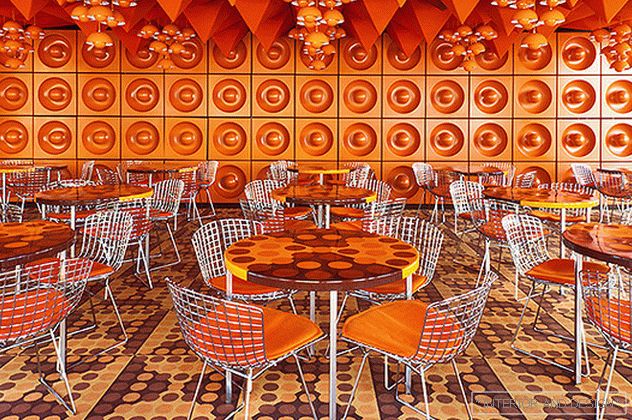 The dining room at the headquarters of the magazine Spiegel in Hamburg. Interior design Verner Pantona.
The dining room at the headquarters of the magazine Spiegel in Hamburg. Interior design Verner Pantona. 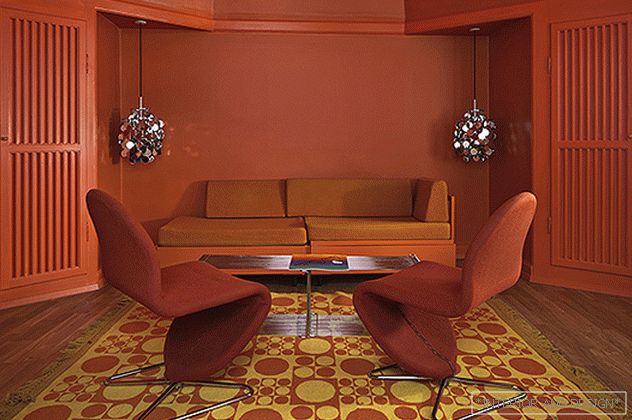 The hall of the Hotel Astoria in Trondheim is the interior design of V. Panton.
The hall of the Hotel Astoria in Trondheim is the interior design of V. Panton. In the childhood of Verner Panton, nothing foretold that he would become a designer. He was born in 1926, his parents kept a hotel in Gantofte, a tiny village on the island of Funen. He dreamed of becoming an artist, but he did not find a talent for painting and drawing. Despite this, in 1944, Panton won a place in a technical college in Odense, the largest city of the island.
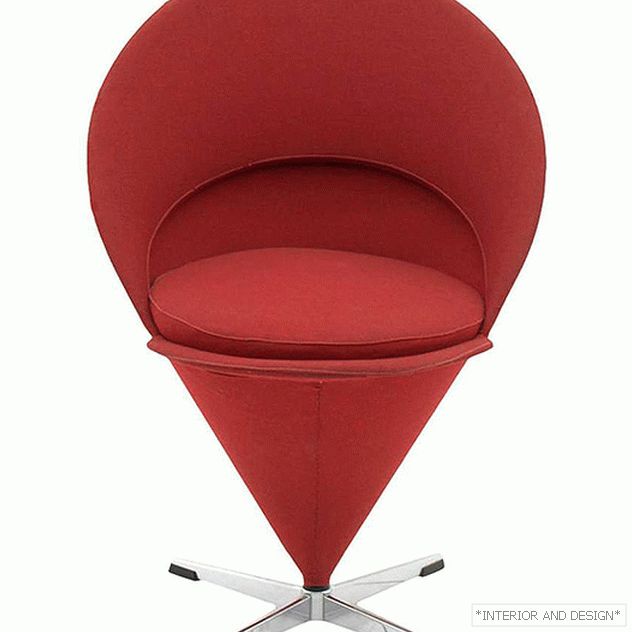 L1 Cone Chair, Diesel. В. Pantone, Vitra.
L1 Cone Chair, Diesel. В. Pantone, Vitra. 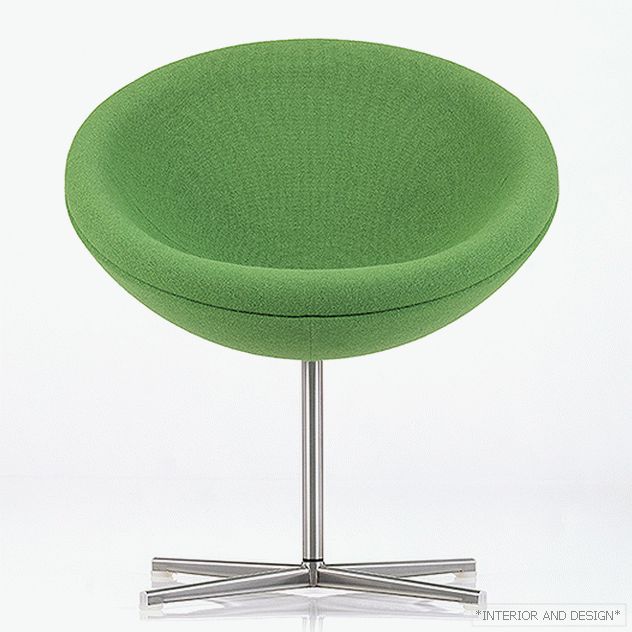 Stul C1, diesel. В. Pantone, 1959, Vitra.
Stul C1, diesel. В. Pantone, 1959, Vitra. 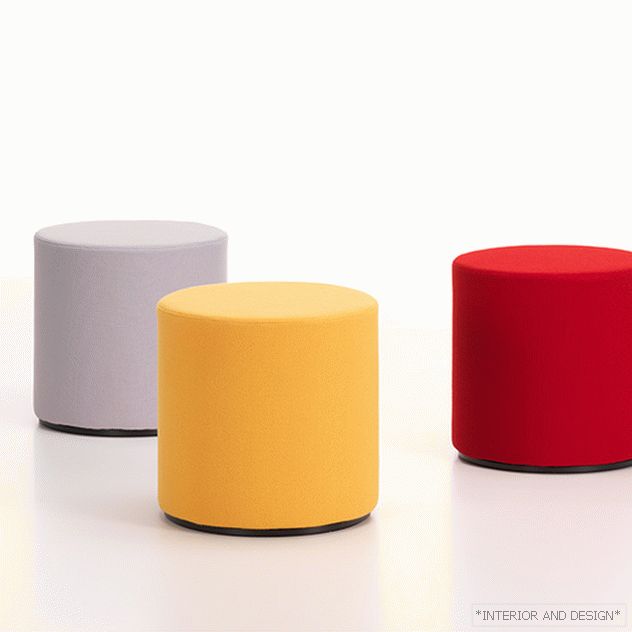 Visiona stools are designed by V. Panton for the installation of Visiona, 1970, Vitra.
Visiona stools are designed by V. Panton for the installation of Visiona, 1970, Vitra. 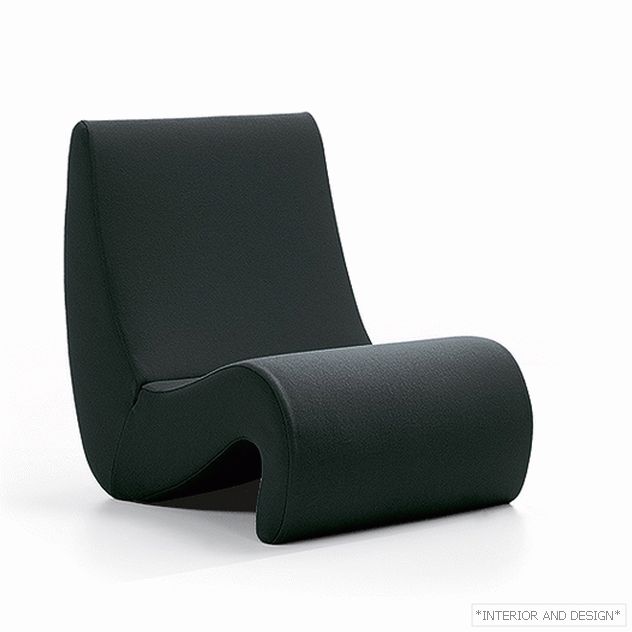 Armchair Ameoba, Diesel. В. Pantone, 1969/1979, Vitra.
Armchair Ameoba, Diesel. В. Pantone, 1969/1979, Vitra. Denmark was occupied by Germany, and Panton joined the resistance movement. At the end of World War II, he hid for several years after the Germans discovered a cache of weapons in his room. After graduating from Odense, Panton moved to Copenhagen in 1947 and was enrolled at the Royal Academy of Arts as a student architect. There Paul Henningsen dedicated Verner Panton to the subtleties of subject design. It was Paul Henningsen who honed Panton’s taste for pure, impeccable aesthetics. In 1950, Panton married Tove Kemp, the adopted daughter of Henningsen. But he soon left her. Arne Jacobsen, who was helped by Panton from 1950 to 1952, had the same strong influence on Panton: together they worked on various projects, including the famous Ant chair. Panton later claimed that it was Arne Jacobsen who taught him more than anyone else. In addition to the elegance in his subjects, there has always been a search for new materials and technologies that Verner Panton was also passionate about at the time.
After leaving Jacobsen, Panton lived in freelancing, taking orders for design and architectural projects. He patented the iron for ironing shirts. And on the received finances I bought the same Volkswagen truck. In 1955, Fritz Hansen began the production of Panton chairs Bachelor and Tivoli. But Verner Panton found his own individual style only in 1959, releasing the Cone chair. Initially, he designed it for the restaurant Komigen, a new institution, which was opened by his parents in Funen. The chair "Cone" justifies its name - a metal sheet rolled into a cone with a sharp end is mounted on a cross-shaped base. Danish entrepreneur Percy von Halling-Koch spotted this chair at the opening of the restaurant and offered it to Panton. When the chair was filmed for publication in the Danish design magazine Mobilia, Panton set down a chair and a naked mannequin, the shooting caused scandal. The Cone chair provoked unrest in New York, the police ordered to remove it from the storefront, as crowds gathered on the street to look at the Cone.
Having created a reputation of a designer who sees the future, Panton automatically received permission to experiment. He worked on the first samples of inflatable furniture - from a transparent plastic film. In 1960, he designed the “Total Environment” for the Astoria Hotel in Norwegian Trondheim. According to Panton, the floor, walls and ceilings were covered with op-art ornaments. The project was a start for the fantastic “total environments” that Panton created in Hamburg for the headquarters of the Spiegel magazine in 1969 and the famous installation Visiona II, which blew up the 1970 Cologne furniture salon.
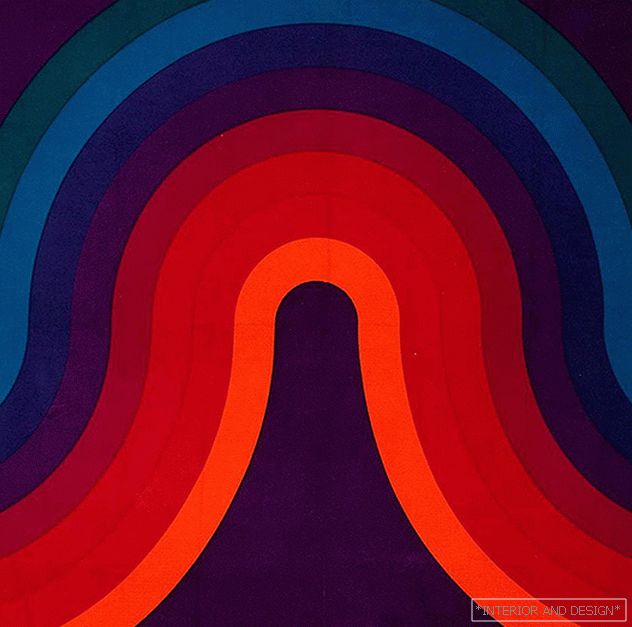 Mira X Spectrum Curve, Diesel. В. Pantone.
Mira X Spectrum Curve, Diesel. В. Pantone. Werner Panton applied the same principle while working on the office of the publishing house Gruner + Jahr in Hamburg in 1973. Tired of living in Denmark, Panton in 1962 moved to Cannes, but finally settled in Switzerland. He married again, this time his wife was Marianna Person-Ortenheim. In Switzerland, he began his long-term cooperation with the furniture company Vitra, which at that time was licensed to sell products of the American furniture company Herman Miller. For Vitra, Werner Panton designed the Flying Chair, an optimistic fantasy item that became a hit in the 1964 Cologne Furniture Salon. And in 1967, Vitra presented to the public the Panton Chair, the first chair, bent according to the principle of an overhanging beam from a single sheet of plastic. Smooth, elegant, sexy subject has become a symbol of the era. Especially the chair became famous after shooting "How to undress in front of her husband" for the magazine Nova.
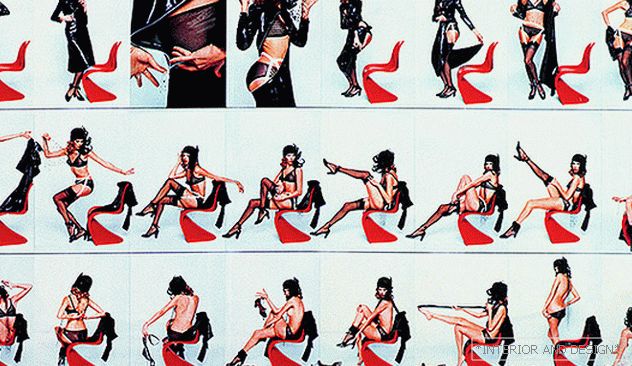 "How to undress in front of her husband" - a publication in the magazine Nova (May issue of 1971, model - popular singer Amanda Lear), who made Paton's chair super popular.
"How to undress in front of her husband" - a publication in the magazine Nova (May issue of 1971, model - popular singer Amanda Lear), who made Paton's chair super popular. Despite the fact that during the 1970s Panton was repeatedly awarded with prestigious awards, his popularity was declining. In the aftermath of the war with Vietnam, his optimism seemed out of place. The irony and more politicized design of Ettore Sottsassa, Alessandro Mendini and Gaetano Pesce came to the fore. Gradually, Werner Panton found himself isolated in his Swiss retreat. The situation changed dramatically in the mid-1990s, when the fashion for the design of the mid-twentieth century in general, and in particular, for the design of Verner Panton, began to return.
Graphic designer Peter Saville chose a 1964 Shell Pantonese lamp for the dining room of a fashionable apartment in London Mayfair. The shooting of this apartment went around the entire interior press. In 1995, the British Vogue placed nude Kate Moss on the cover in a Panton chair. The re-release of items designed by the designer in the 1960s began. Panton himself gave an interview and was preparing to open his own exhibition "Verner Panton: Light and Color." Before the opening day, he did not live 12 days. He died on September 5, 1998.


